 I’m back. I’ll explain my three-month hiatus and play catch-up with my usual end-of-year posts over the next month or so. But, with the 75th anniversary of D-Day coming up on June 6, 2019, I’ve just realized that I’m likely to feel compelled to correct an endless stream of repetitions of the Capa D-Day myth, which has so permeated our culture that this investigation has barely begun to dislodge it. So I will kick off the new year with one of what will almost surely become a series of chastisements.
I’m back. I’ll explain my three-month hiatus and play catch-up with my usual end-of-year posts over the next month or so. But, with the 75th anniversary of D-Day coming up on June 6, 2019, I’ve just realized that I’m likely to feel compelled to correct an endless stream of repetitions of the Capa D-Day myth, which has so permeated our culture that this investigation has barely begun to dislodge it. So I will kick off the new year with one of what will almost surely become a series of chastisements.
The Incorrigible Cynthia Young
The Girl Can’t Help It Dep’t: Cynthia Young, curator of the Robert Capa and Cornell Capa Archive at the International Center of Photography in New York, recently published a short article titled “Les deux icônes de Capa” (Capa’s two iconic photos) in an October 2018 special supplement to the French newspaper Le Monde, titled 50 images qui ont marqué l’histoire (50 images that have marked history). The images in question are Capa’s Spanish Civil War “Falling Soldier” from 1937 and “The Face in the Surf” from his 1944 D-Day reportage.
After repeating — and thereby endorsing — the myth of Capa’s having caught this Loyalist militiaman at the moment of his death, Young briefly acknowledges the existence of contrary opinions based on research of a kind she herself has never conducted. Here’s what she concludes about “Falling Soldier”:
“Les autres images de cette journée s’ajoutant au récit de ce qui s’est passé avant ou après la prise de cette photographie ont permis à un chercheur espagnol de localiser la colline près du village andalou d’Espejo, en 2009. Mais le scénario exact n’a jamais été clair, et ne le sera sans doute jamais.”
(“The other images [Capa] made that day, in addition to the story of what happened before and after the taking of this photograph, allowed a Spanish researcher to locate the hill near the Andalusian village of Espejo, in 2009. But the exact scenario has never been clear, and will probably never be.” My translation.)
This conveniently ignores entirely the subsequent published research of the unnamed “Spanish researcher,” José Manuel Susperregui, Associate Professor, Audiovisual Communication and Advertising Department, University of the Basque Country, Spain. Susperregui’s 2016 update of his research, “The location of Robert Capa’s Falling Soldier” (available online at the website of the journal Communication & Society, and thus readily accessible by Young), not only identifies the exact location at which Capa made this image and the others from that same day but also proves that Capa staged all the imaged in this series, and that none of the participants in these theatrics died from enemy fire during that process.
In point of fact, therefore, Young notwithstanding, the “Falling Soldier” scenario has become reasonably clear.
Cynthia Young, “Les deux icônes de Capa,” Le Monde Hors-Série, 50 images qui ont marqué l’histoire, October 2018, pp. 78-79
•
Concerning the Omaha beach exposure, Young writes:
“Capa, entouré d’explosions de bombes et de rafales de mitrailleuses, a pris des clichés dans l’eau pendant un court instant. … Il s’attendait à ce que ses pellicules aient été endommagées par l’eau – il était accroupi dans la mer, troublée et agitée, teintée de sang. Quelques semaines plus tard, il a appris que toutes les images, sauf dix, avaient été détruites dans la chambre noire ou pendant la prise de vue.”
(“Capa, surrounded by explosions of bombs and bursts of machine guns, took photos in the water for a short while. … He expected his films to have been damaged by the water — he was squatting in the sea, troubled and agitated, tinged with blood. A few weeks later, he learned that all but ten images had been destroyed in the darkroom or during the shooting.” My translation.)
As our research has demonstrated, Capa landed at Colleville-sur-mer, a relatively lightly defended sector of the beach where enemy fire proved ineffective. No “bombs” were dropping there, since the Germans had no available aircraft with the capacity to bomb the invading troops. Young has at best a shaky grasp of military matters; perhaps she means shells from German cannon. But Capa’s images show no shell explosions, nor any bullet splashes. (Indeed, the absence of strong German resistance at this precise spot enabled the 1st Division troops to break through to the bluffs a short time after Capa left the beach.)
Capa’s images also make it clear that the water level where he landed was only knee-high, as we see in his very first frame, shot from the front of the Higgins boat that brought him to Easy Red, the troops with whom he arrived just a few yards ahead of him. No evidence in any of the ten exposures he made there images indicates that the water there was “tinged with blood,” nor that Capa was ever “squatting in the sea”; all of his Easy Red pictures appear to have been made from the eye level of a standing man.
As a result, Capa would have had no reason to “expect his films to have been damaged by the water.” He carried a waterproof oilskin pouch to protect both his supply of unexposed film and his finished rolls of exposed film. His cameras never got wet; we know this because, upon reaching the English coast the next day and turning his D-Day films over to a courier, he returned immediately to Normandy and resumed his coverage of the invasion, using the same cameras with which he’d arrived — an impossibility had they gotten drenched with salt water.
Finally, of course, our research has proven that Young’s claim that “A few weeks later, [Capa] learned that all but ten images had been destroyed in the darkroom or during the shooting” constitutes an outright lie. No such “destruction” of Capa’s films occurred in either situation. Even John Morris, assistant picture editor in Life’s London bureau during the invasion and one of the primary promulgators of the darkroom-disaster myth, confessed at the end of his life that he never saw any damaged films, and that Capa’s ten Easy Red exposures are probably the only exposures he made on the beach that day.
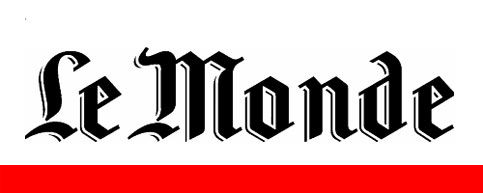 It’s worth noting, for the record, that when our project went viral in France in the summer of 2015 the French media conglomerate La Vie-Le Monde Group attacked our project not once but twice: first via one of its most popular magazines, Télérama, and then in its major publication, the newspaper Le Monde. That followed an earlier Télérama profile of John Morris in which Arts Editor Yasmine Youssi encouraged him to repeat the myth yet again. No surprise, then, that they would endorse Young’s elaborately filigreed version of the fable even now. (Plus ça change, plus c’est la même chose.)
It’s worth noting, for the record, that when our project went viral in France in the summer of 2015 the French media conglomerate La Vie-Le Monde Group attacked our project not once but twice: first via one of its most popular magazines, Télérama, and then in its major publication, the newspaper Le Monde. That followed an earlier Télérama profile of John Morris in which Arts Editor Yasmine Youssi encouraged him to repeat the myth yet again. No surprise, then, that they would endorse Young’s elaborately filigreed version of the fable even now. (Plus ça change, plus c’est la même chose.)
•
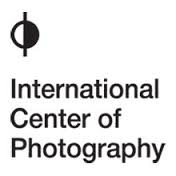 Cynthia Young has a bad habit that’s fatal to credible scholarship: By dint of her position as the de facto world’s foremost Capa authority, she considers herself entitled to simply make up shit like this — not just ignoring contrary evidence and doubling down on the myth but actually adding spurious details to it, as did her predecessor in that role, the late Richard Whelan. The present instance is not the first time I have called her out for that lamentable tendency. She needs to stop making shit up; and, if she doesn’t do that voluntarily, then her boss at ICP, Mark Lubell, needs to put a stop to it.
Cynthia Young has a bad habit that’s fatal to credible scholarship: By dint of her position as the de facto world’s foremost Capa authority, she considers herself entitled to simply make up shit like this — not just ignoring contrary evidence and doubling down on the myth but actually adding spurious details to it, as did her predecessor in that role, the late Richard Whelan. The present instance is not the first time I have called her out for that lamentable tendency. She needs to stop making shit up; and, if she doesn’t do that voluntarily, then her boss at ICP, Mark Lubell, needs to put a stop to it.
The corruption of Capa scholarship that permeates everything Capa-related that ICP touches, from that institution’s origins till today, does serious and perhaps permanent damage to its reputation. And that’s really, really bad for the brand — a fact that Lubell, with his expertise in marketing, must surely understand. (Before he got into the photo-specific end of the arts-management game, he handled the promotion of Greg Norman golf videos)
(Thanks to Patrick Peccatte for bringing this article by Young to my attention.)
Liar’s Club
Prepping materials for the world premiere of the Capa show in St. Louis last fall, about which I’ll write sometime soon, I came across this from Celebrating the Negative, by John Loengard (New York: Arcade Publishing, 1994). The book includes Loengard’s photograph of Cornell Capa’s hands above a lightbox displaying Robert Capa’s eight surviving D-Day negatives.
From Loengard’s accompanying text (p. 42):
“… When Capa film from D-day’s [sic] bloodiest shore reached London the next evening, Hans Wild (like Capa, a Life photographer) saw the negatives fresh from the hypo. He told John Morris, Life’s London picture editor, that Capa’s were the ‘best pictures of the invasion.'” [Ridiculous on the face of it, since at that point Wild could not have seen any other invasion images with which to compare them in order to make such a judgment. — A.D.C.]
“… Pressured by the picture editor to dry the film quickly and make contact prints for the press pool, the [darkroom assistant] had closed the door of the negative drying cabinet, sending the heat inside so high that the emulsion on Capa’s film melted. ‘I held the film in my hand, and it [the emulsion] just ran … like pea soup,’ says Morris, who still feels somehow responsible.” [More nonsense; like Cornell Capa, Loengard, himself an experienced photographer, surely knows that b&w film emulsion doesn’t melt in drying cabinets, whose doors are always closed when holding wet film. — A.D.C.]
So here you have two renowned photojournalists with extensive hands-on experience with black & white film processing shamelessly colluding on a fabulation that any professional photographer should dismiss out of hand. This tells us all we need to know about their integrity and commitment to truth.
Most importantly, though, this is the only currently known instance of Morris recounting this fable in which Morris actually asserts that he physically held the damaged film as the emulsion dripped off it. In later versions, including an email q&a published at this blog, he would claim that he never actually laid eyes on the supposedly damaged film, but simply believed what the assistant purportedly told him.
•
Finally, for a bit of comic relief: “British Design for D-Day Stamp Gets Address Wrong by 8,000 Miles,” by Palko Karasz, New York Times, Dec. 29, 2018.
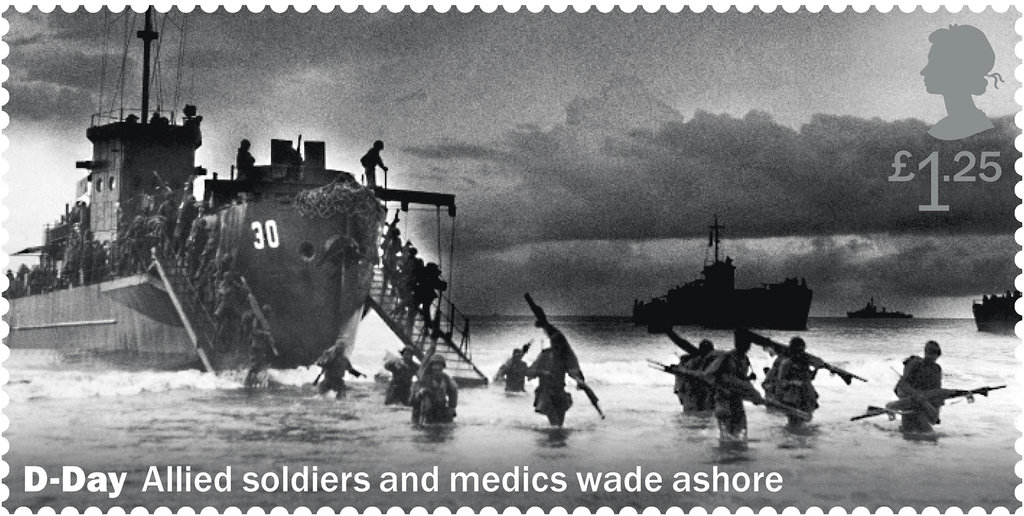
British stamp intended to commemorate 75th anniversary of D-Day landing instead shows U.S. troops in Dutch New Guinea
•
(For an index of links to all posts in this series, click here.)
•
 Special offer: If you want me to either continue pursuing a particular subject or give you a break and (for one post) write on a topic — my choice — other than the current main story, make a donation of $50 via the PayPal widget below, indicating your preference in a note accompanying your donation. I’ll credit you as that new post’s sponsor, and link to a website of your choosing. Include a note with your snail-mail address (or email it to me separately) for a free signed copy of my 1995 book Critical Focus!
Special offer: If you want me to either continue pursuing a particular subject or give you a break and (for one post) write on a topic — my choice — other than the current main story, make a donation of $50 via the PayPal widget below, indicating your preference in a note accompanying your donation. I’ll credit you as that new post’s sponsor, and link to a website of your choosing. Include a note with your snail-mail address (or email it to me separately) for a free signed copy of my 1995 book Critical Focus!
 But wait! There’s more! Donate now and I’ll include a copy of The Silent Strength of Liu Xia, the catalog of the 2012-13 touring exhibition of photos by the dissident Chinese photographer, artist, and poet, currently in her sixth year of extralegal house arrest in Beijing. The only publication of her photographic work, it includes all 26 images in the exhibition, plus another 14 from the same series, along with essays by Guy Sorman, Andrew Nathan, and Cui Weiping, professor at the Beijing Film Academy.
But wait! There’s more! Donate now and I’ll include a copy of The Silent Strength of Liu Xia, the catalog of the 2012-13 touring exhibition of photos by the dissident Chinese photographer, artist, and poet, currently in her sixth year of extralegal house arrest in Beijing. The only publication of her photographic work, it includes all 26 images in the exhibition, plus another 14 from the same series, along with essays by Guy Sorman, Andrew Nathan, and Cui Weiping, professor at the Beijing Film Academy.


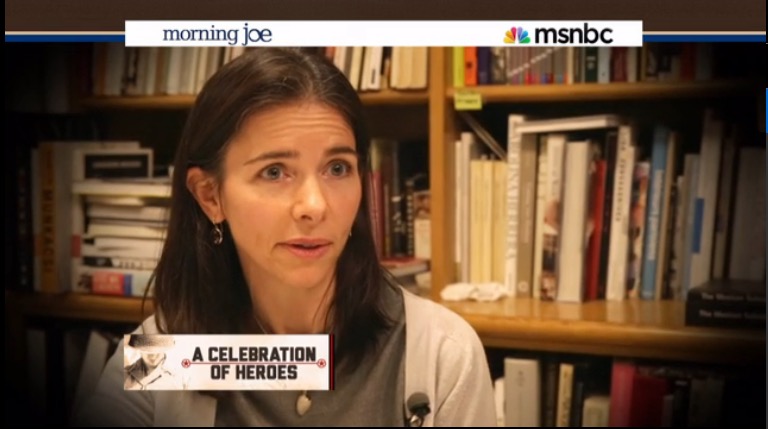
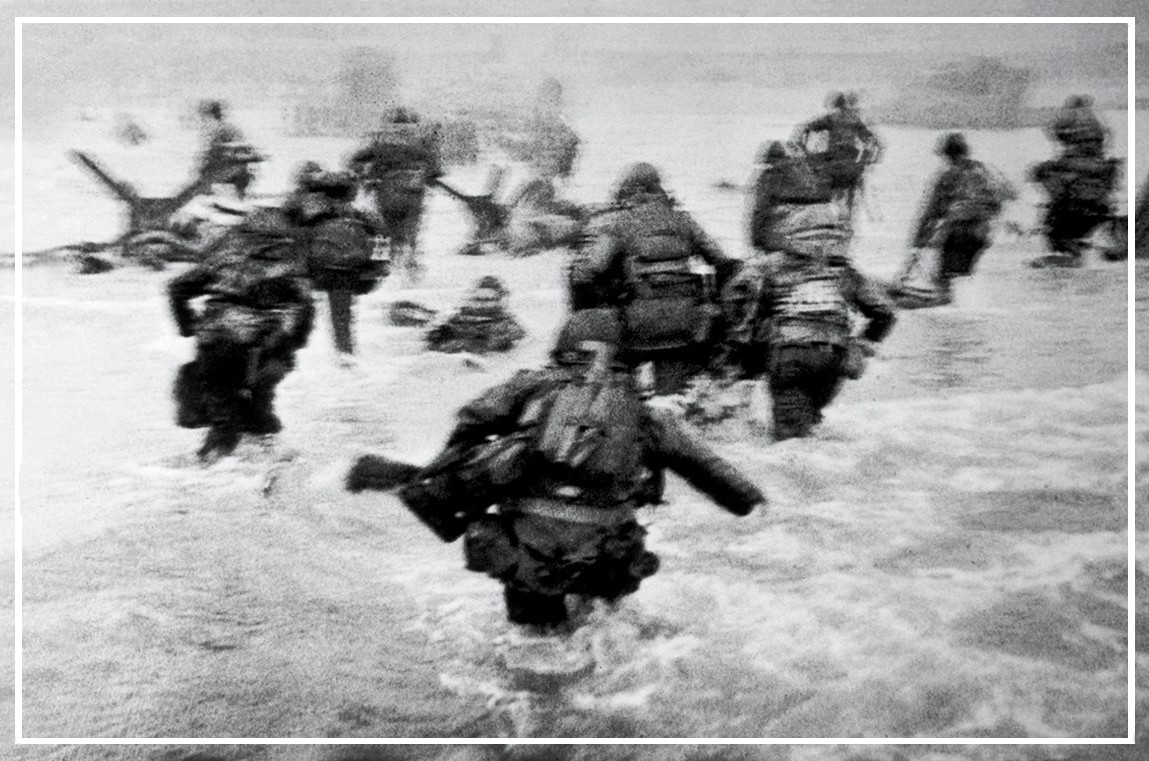

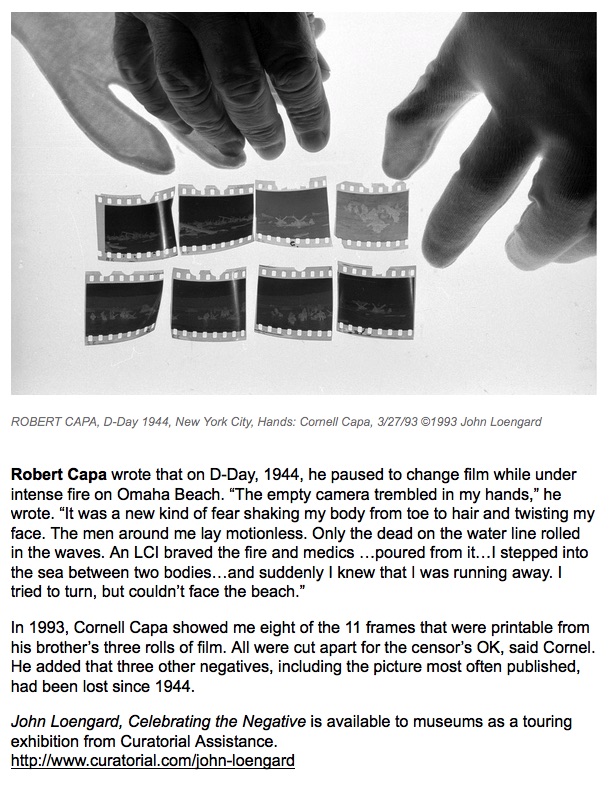
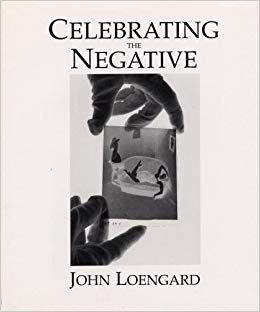




It would be an interesting exercise to try to calculate the total sum of money that has been made since D-Day by all parties selling the myth. There seems to be some law of nature that once a certain dollar threshold is crossed, the truth is forever abandoned. Perhaps after the last sale of the last commemorative Life Magazine retrospective, when there is no more money to be made, we will finally get relief.
I have no idea how to even begin that exercise, especially since it would involve factoring in not just multiple intangibles (e.g., financial benefits to John Morris of keeping this myth going) but also stats on inflation over seven decades. With that understood, I welcome anyone’s effort toward such an estimate; post it as a comment or propose a Guest Post.
Even setting aside the active efforts of Young and others to promote the myth, it has clearly taken on a life of its own, as the coming year and the 75th anniversary will undoubtedly prove. Thereafter I expect general interest in D-Day to wane gradually. Most survivors will have died by the 80th (2024), so the first-hand narratives will all have been gathered (or not) by then. Without any living eyewitnesses to put a human face on the commemoration, it will lose its resonance and, by the time the 100th anniversary rolls around in 2044, will have turned into just another remote historical moment.
Which doesn’t mean that the results of our investigation will have overcome and replaced the myth, alas. At most we can hope that eventually no serious scholar or historian or journalist will uncritically reiterate the fable without at least acknowledging the contrary evidence we gathered. But that could represent mere wishful thinking. Time will tell.
Many thanks for the years of work on Capa’s D-Day outing. After all your work I have to think that the comments early on re Capa heading back because of fear are as much smoke as the rest. He was there to take some photos on the beach. He did that and went back to London. Admittedly a more determined photographer might have moved across the beach and shown more of the action, but that photographer might have missed the dispatch deadlines.
Sadly, though, someone now needs to get that modern recepticle of “truth” – Wikipedia – to move on from the myth.
I initially made this comment on Exposure’s Medium.com piece, but I find Medium kind of stupid so I moved it here. [The refeference here is to my lecture on this project, as delivered to the Society for Photographic Education National Conference in Philadelphia a year ago, now online in the SPE journal Exposure. — A.D.C.]
—
I think one can make the case that Capa and his merry band of myth-makers did some seminal work in “How to sell a war” here. The ultimately stupid story of the D-Day pictures survives so well because it mirrors the courage and grit of the Brave Boys who stormed the beach that day. It dovetails perfectly with, and supports, the larger story of The Good War and the brave allies who crushed the bad guys. It has it all, desperate adventure, a tragic setback, a lucky break, and in the end, a kind of victory.
I’m not arguing that the Nazis were not bad guys, at all. You sell “good” wars the same way you sell “bad” ones, whatever those designations mean. But it is true that Capa’s work in conflict photography did a lot for selling wars whether they be good, bad, or indifferent. Capa is always “embedded” with the good guys, as it were, and his rugged courage mirrors their courage, etc, etc.
Arguably the media in the USA either lost their way, or the government lost their control, for a few years during the late 1960s and early 1970s, but boy howdy have we all remembered Capa’s lessons nowadays. Atrocities? There are none of those! Venal turds leading frightened men? No. We are the good guys, we are tough but fair, we are brave, and likewise our photojournalists, bravely bringing the brave stories of the brave men to our fawning people.
The bomb-video footage from the first Gulf War even kind of looks like Capa’s D-Day pictures, doesn’t it? Monochrome, high contrast, shaky.
What you have uncovered here is a detail in a pattern of propaganda-making. Well done, this research should, and I hope will be, frequently cited in soon-to-be-written projects detailing the ways our modern wars are sold to the public by a pliant, and disingenuous, media.
I probably sound a bit tinfoil-hat here, but I’m awfully cynical. I promise, I only believe in a few whacky conspiracy theories.
On behalf of our research team, thanks for your good word about our efforts. As for this project getting cited as an example of inquiry into the machinations of media, from your lips to God’s ear, as they say.
You don’t sound “tinfoil-hat” to me. While I believe in distinguishing between active, conscious conspiracy and “osmotic” conspiracy, both come into play in this situation, as they do in others.
In all fairness, I must add that during that period — say, from the start of the Spanish Civil War all the way through World War II — everyone involved in mainstream journalism, from the battlefield reporters on up the food chain to the publishers, understood themselves as propagandists, and not infrequently said so, unabashedly, in speeches and in print. (True on all sides of those conflicts, the Allies and the Axis.) This despite Walter Lippmann’s already famous 1920s call for “objectivity” in journalism.
So Robert Capa, his brother Cornell, John Morris, everyone in the LIFE hierarchy, and the relevant others of those several generations came of age in their field when very different practices prevailed, no standards existed beyond the rules at individual publications, and no professional organizations had formulated anything resembling codes of ethics. (For my further thoughts on this, see my essay “Ethics in Photojournalism Then and Now: The Case of Robert Capa” for the journal Media Ethics.) Journalistic and photojournalistic acts that would get you fired and/or ostracized today seemed commonplace and acceptable back then.
I intend this more as explanation than excuse for what we now, in hindsight, view as the excesses of that era. I simply think it important to point out that the absence of clear-cut policies at that time shaped the behavior of the journalists who worked in that context. If we apply today’s strictures to them, we need to acknowledge that we do so retroactively and, to some extent, anachronistically — while also recognizing, that, as Omar Khayyám put it, “Yesterday This Day’s Madness did prepare.”
Well thank you 😉 I, naturally, think I am right about everything but I realize I sometimes sound a little out-there.
Regarding osmotic conspiracy: a friend of mine and I have developed a theory of what we call emergent conspiracy, best summarized as a conspiracy in which all of the co-conspirators are unwitting. I suspect this is the same thing.
Thank you for the link to your piece on evolving ethics. This is something I have felt sure of, but always through specific examples here and there. That was a good read, which I will revisit in more detail when it’s not evening and my children are not bugging me.
My take on this is that modern ethical guidelines function largely as covering fire for more or less the same kinds of biased reporting we’ve always had. A good picture editor still has a perfectly adequate quiver of tools to use to tell whatever story they like. The ethical guidelines exist to allow them to periodically single out of PJ to ritually excommunicate in order to enhance the illusion of an objective press. This is, I assume, an emergent or osmotic conspiracy, mostly, but just as real as the other sort.
What actually “telling the truth” with a photo, or a photo-illustrated story, would actually entail is a rathole the depths of which I have yet to plumb. I think there might actually be no bottom. Blah blah index blah blah authorial whatever blah blah politics of representation on and on. If journalism is the first draft of history, then I suppose it has all the troubles of both first drafts, and of history.
From an earlier post in the Capa D-Day series:
To begin with, conspiracy comes in different forms. There’s the active conspiracy, in which individuals and institutions knowingly collude with each other to achieve mutually beneficial goals. There’s the conspiracy of silence, in which individuals and institutions stand aside, stay mum, and simply let matters take their course, so long as that favors their interests. And then there’s what Victor Gold, former press secretary to Vice President Spiro T. Agnew, called “osmotic conspiracy,” in which individuals and institutions tacitly but energetically serve what they understand as their common purposes.
I’m 64 years old my father has passed on. He always told me stories of d-day one day I was online going through d day photos randomly. And I actual found a photo of him sitting with wounded on the beach. I know it’s my father he was with 16th regiment bat. 1st in infantry. He’s the dark haired fellow starring into the camera.if anyone has any more information on this pic. Please contact rjhigginsxlch@gmail.com